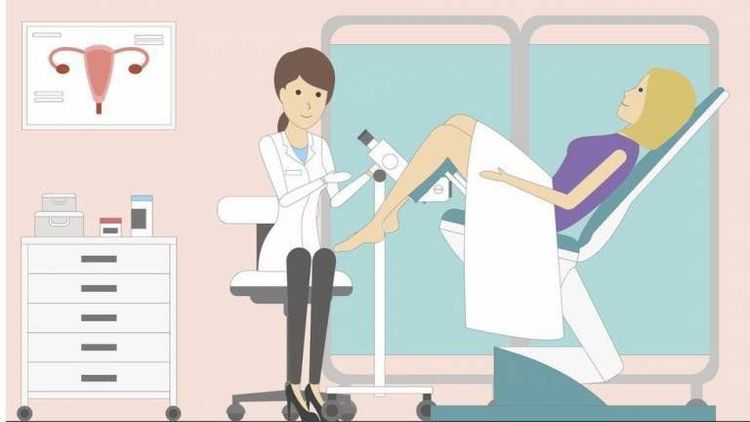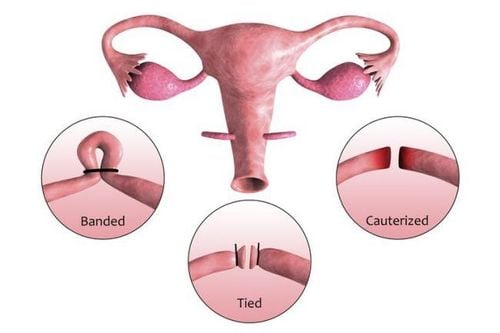This is an automatically translated article.
Sterilization is a safe and highly effective method of birth control. This is a simple method that does not affect physiological health. However, the timing of sterilization is very important, especially when performing the procedure in postpartum women.1. Some things to know about female sterilization
Currently, the method of contraception by female sterilization is widely applied because of its advantages over other methods. Research by scientists on female sterilization procedure showed the following results:Women undergoing sterilization did not have a significant change in their menstrual cycle. Research by author Costello et al shows that more than 80% of women do not have a change in sex drive after having a tubal ligation. Sterilization does not protect against sexually transmitted diseases, so it should be combined with other methods of contraception in the case of a sexually transmitted disease. Sterilization does not cause long-term health complications for the patient and does not increase the risk of breast cancer, endometrial cancer, and reduced bone density. Research results show that about 0.9-26% of women regret after sterilization, of which women younger than 30 years old account for the largest proportion. Regrettable factors include marital status, children's health, and pre-pregnancy.
2. What is postpartum sterilization?
Female sterilization is a procedure that blocks the fallopian tubes so that the egg does not travel into the uterus, thereby preventing sperm and egg from meeting. Postpartum sterilization is a method of sterilization performed on women immediately after giving birth.Sterilization method is safe, highly effective in preventing pregnancy and is recommended by doctors for women over 30 years old who have at least two healthy children and a second child over 3 years old.
3. Postpartum sterilization includes what methods?
The most commonly used method of postpartum sterilization is tubal ligation. In the case of a woman giving birth naturally, the doctor will make a small incision in the abdomen to perform the procedure. In the case of women having a caesarean section, the postpartum tubal ligation procedure can be performed through an abdominal incision made during cesarean delivery.Sterilization during cesarean section is a birth control method with many advantages over other methods such as:
This is a permanent, safe, highly effective, simple and inexpensive birth control procedure. Women do not need to periodically monitor the position of the IUD as in the method of using an IUD. The cost of sterilization is not as high as contraceptive methods using Implanon, IUD mirena. Pregnant women are not affected by subjective factors such as forgetting to take the pill when taking oral contraceptives or using the wrong method of using condoms.

Triệt sản sau sinh mổ là phương pháp ngừa thai mang lại hiệu quả
4. How is postnatal sterilization performed?
When a woman has just given birth, the fallopian tubes and uterus are still dilated and are located just below the abdominal wall below the navel. Therefore, postpartum sterilization is best done before the uterus returns to its normal position, usually within an hour or a few days after birth. However, women with premature rupture of membranes, fever during labor, and risk of infection should stop the procedure, possibly moving to the 8th week postpartum. In the case of a cesarean section, the procedure is performed as soon as the baby is delivered.Postpartum sterilization is performed by doctors according to the following steps:
The doctor conducts regional anesthesia, general anesthesia or local anesthesia. The doctor makes a small incision below the navel. In the case of a cesarean section, the fallopian tubes are tied through the caesarean section. The doctor brings the fallopian tube higher through the incision, then cuts and tightens it with a specialized thread. Finally, the doctor stitches and bandages the incision. Postpartum sterilization performed in about 30 minutes and performed soon after delivery will not prolong a mother's hospital stay. The effect of this procedure only affects the fallopian tubes and does not affect the ovaries, so performing this method will not affect hormones, menstrual cycles as well as sexual activities.
5. What are the side effects of postpartum sterilization?
The side effects of postpartum sterilization depend on the type of anesthetic used and how the surgery was performed. The patient may feel pain in the surgical area and a feeling of fatigue. Some possible side effects when performing sterilization procedures include:Dizziness Nausea Shoulder pain Cramping stomach pain Stomach bloating Sore throat (Due to using a breathing tube in the case of general anesthesia) Abdominal pain lasts for a few days or the pain gradually worsens with fever, the patient must immediately go to a medical facility for examination and treatment.
At Vinmec International General Hospital, tubal ligation procedures are performed by a team of experienced, qualified and highly skilled medical professionals. The process meets international standards, ensuring sterility, safety, and high efficiency. In addition, Vinmec also focuses on investing in a system of modern machinery and equipment, helping to bring the best health care services to patients.
Please dial HOTLINE for more information or register for an appointment HERE. Download MyVinmec app to make appointments faster and to manage your bookings easily.













